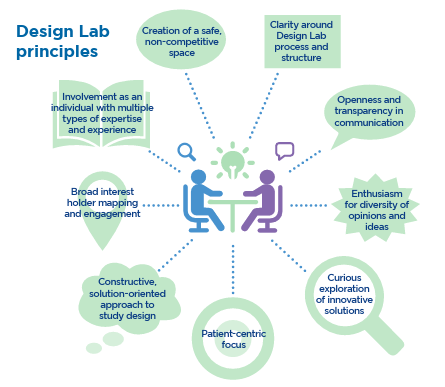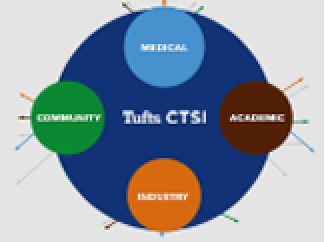When kids get sick while they’re in the hospital, what is the best way to treat them? Is it better for families and hospitals if children are admitted directly? And what happens to them after they go home? JoAnna K. Leyenaar, MD, MPH, MSc, a pediatric hospitalist at the Floating Hospital for Children at Tufts Medical Center, has spent the last several years working to answer these questions. From a KM1 Career Development Award in 2011, to a Pilot Studies Program grant in 2014, and now a prestigious award from the Deborah Munroe Noonan Memorial Research Fund, her research in comparative effectiveness and inpatient pediatric care is gaining national attention.
“I have been interested in clinical research for as long as I have been in medicine, or even before,” says Dr. Leyenaar. “The Tufts CTSI KM1 was an amazing opportunity to develop advanced research skills and receive mentorship from faculty whose work I admire tremendously.”
Dr. Leyenaar’s KM1 project studied the treatment of community-acquired pneumonia in previously healthy children admitted to U.S. hospitals (published April 2014 in Pediatric Infectious Disease Journal). This research increased her awareness about the frequency with which children with medical complexity (CMC) require hospitalization, and inspired her to examine resource use and outcomes among children with complex chronic conditions (CCC) who were admitted to hospitals because of pneumonia. She found that children with CCC were more likely to have longer hospital stays, higher hospital costs, and increased risk of adverse outcomes (published April 2014 in Pediatric Infectious Disease Journal, e-publication ahead of print).
Dr. Leyenaar then turned her focus to direct pediatric hospital admission. She studied nearly 20,000 children admitted to 278 hospitals, and found that admitting children directly, rather than through the Emergency Department, may result in lower hospital costs with no differences in rates of transfer to the intensive care unit or hospital readmission (published July 2014 in Journal of the American Medical Association Pediatrics, e-publication ahead of print). This work raised another question, however: what happens to the children after they are discharged?
Patients leaving hospital care are at-risk for adverse events and readmission, especially if they have multiple health concerns. This is especially true for CMC, who account for 60% of pediatric hospital readmissions. Although national physicians’ organizations developed a Transitions of Care Consensus Policy Statement to address these issues, there are no established methods for health care providers to engage patients and families in planning hospital-to-home transitions.
Dr. Leyenaar decided to focus next on improving these transitions of care. She received a Tufts CTSI Pilot Studies award to develop methods for incorporating patients’ perspectives into the discharge record, a project that began in July 2014. Concurrently, she applied for a grant from the Noonan Research Fund to work with the parents of CMC to determine their preferences, priorities, and goals for hospital-to-home transitions while working with health care providers to determine issues that should be discussed with CMC parents prior to discharge. She hopes this research will generate knowledge that will improve hospital-to-home transitions of care and the quality of life for CMC.
“Comparative effectiveness research and patient/family engagement are changing health care,” says Dr. Leyenaar. “We’re giving families a real voice to express their priorities and preferences, and this generates new knowledge about patients who may benefit most from particular treatments or processes.”
She adds, “Tufts CTSI has been incredibly supportive of my research career, with faculty providing invaluable mentorship in study design and grant preparation, and in providing funding to allow me to pursue this work.”



